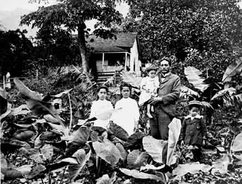How the United States took Control of Hawaii

In 1820, the first Americans traveled to the Hawaiian islands to provide aid to the natives and to spread the good word. The missionaries greatest long-lasting accomplishment was having children. Overtime, the American population continued to grow and so did American influence. By the late 1870s and 80s, the United States considered the Hawaiian islands as a "virtual extension of their own coastline." The Hawaiian islands were seen as a new resource for Americans which were white planters, but they were unable to have their way. Thus, the treaty to annex the islands was developed. The Queen of the islands, Liliuokalani, claimed that the island belonged to the natives and it was amongst them to chose how they are ruled. The treaty was later withdrawn by President Cleveland. Cleveland eventually concluded that he was unable to remove the white population from the island without force, and accepted the progression of annexation of Hawaii.

In 1887 Kalakaua was forced to sign the constitution which stripped the king of much of his authority. It changed the voting rights to favor the white farmers and took voting rights away from the native Hawaiians. Resident whites were allowed to vote; however, Asians were excluded. Because the 1887 Constitution was signed under threat of violence, it is known as the "Bayonet Constitution". King Kalākaua, reduced to a figurehead, reigned until his death in 1891. His sister, Liliʻuokalani, succeeded him on the throne. After a long battle with the new Queen of Hawaii, the beautiful land was annexed by the United States in 1898, three years after Queen Liliuokalani abdicated her throne. Hawaii became an official territory in 1900.
